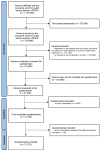Knowledge, Attitudes and Practices Related to Medication, Antibiotics, and Vaccination among Public Service Population: National Survey Conducted in France
- PMID: 36360926
- PMCID: PMC9654407
- DOI: 10.3390/ijerph192114044
Knowledge, Attitudes and Practices Related to Medication, Antibiotics, and Vaccination among Public Service Population: National Survey Conducted in France
Abstract
Medication, antibiotics, and immunization are three major and cost-effective medical interventions but their use is balanced. Knowledge, attitudes and practices (KAP) are a cornerstone. This retrospective study aims at analyzing KAP related to these concerns among the public service population in order to establish the basis for the implementation of selective preventive actions. From a cross-sectional anonymous online questionnaire-based survey among the insurees of a French mutual organization (Union Prévention Santé pour la Fonction publique, UROPS), 33 questions related to medication, antibiotics and vaccination were extracted to evaluate KAP. New variables were constituted: levels of knowledge, antibiotic misuse, proactive behavior and vaccinophobia. Multiple correspondence analysis was performed to identify respondents' homogenous groups. In addition, bivariate statistical comparisons were provided and logistic regressions were carried out to identify determinants of these new variables. Public service population (workers and retired) were highly exposed to polymedication (8.7% vs. 24.4%, p < 0.0001), hypnotics overtake (24.3% vs. 18.4%, p < 0.0001), and misuse antibiotics (33.2% vs. 22.6%, p < 0.0001) despite good levels of knowledge. Proportions of vaccinophobia was low (0.8% vs. 1.7%, p < 0.0001). However, workers have different KAP than retired, without shared determinants in the 3 health domains studied. Respondents were proactive (85.8% vs. 81.6%, p < 0.0001), used multiple sources of trustworthy information and seems to be ready for the delegation of health tasks. Thus, preventive actions related to antibiotics and polymedication should be a priority in vaccination education for mutual organizations such as UROPS. Studying their insurees longitudinally could be interesting to highlight the impact of selective prevention on behaviors, through trusted health professionals (general practitioners, pharmacists…).
Keywords: antibiotics; anxiolytic; attitudes; health knowledge; hypnotic; polypharmacy; practice; prevention; retired; vaccination hesitancy; worker.
Conflict of interest statement
The authors declare no conflict of interest.
Figures






Similar articles
-
Assessment of Knowledge, Attitude, and Practice of Antibiotic Use among the Population of Boyolali, Indonesia: A Cross-Sectional Study.Int J Environ Res Public Health. 2021 Aug 4;18(16):8258. doi: 10.3390/ijerph18168258. Int J Environ Res Public Health. 2021. PMID: 34444015 Free PMC article.
-
Knowledge, attitudes and practices relating to antibiotic use among community members of the Rupandehi District in Nepal.BMC Public Health. 2019 Nov 26;19(1):1558. doi: 10.1186/s12889-019-7924-5. BMC Public Health. 2019. PMID: 31771595 Free PMC article.
-
Surveys of public knowledge and attitudes with regard to antibiotics in Poland: Did the European Antibiotic Awareness Day campaigns change attitudes?PLoS One. 2017 Feb 17;12(2):e0172146. doi: 10.1371/journal.pone.0172146. eCollection 2017. PLoS One. 2017. PMID: 28212400 Free PMC article.
-
Knowledge, Attitudes and Practices (KAP) toward seasonal influenza vaccine among young workers in South China.Hum Vaccin Immunother. 2018 May 4;14(5):1283-1293. doi: 10.1080/21645515.2017.1423157. Epub 2018 Feb 12. Hum Vaccin Immunother. 2018. PMID: 29308971 Free PMC article.
-
[Psychometric characteristics of questionnaires designed to assess the knowledge, perceptions and practices of health care professionals with regards to alcoholic patients].Encephale. 2004 Sep-Oct;30(5):437-46. doi: 10.1016/s0013-7006(04)95458-9. Encephale. 2004. PMID: 15627048 Review. French.
Cited by
-
Bulgarian General Practitioners' Communication Styles about Child Vaccinations, Mainly Focused on Parental Decision Making in the Context of a Mandatory Immunization Schedule.Healthcare (Basel). 2023 Sep 17;11(18):2566. doi: 10.3390/healthcare11182566. Healthcare (Basel). 2023. PMID: 37761763 Free PMC article.
References
MeSH terms
Substances
LinkOut - more resources
Full Text Sources
Medical

